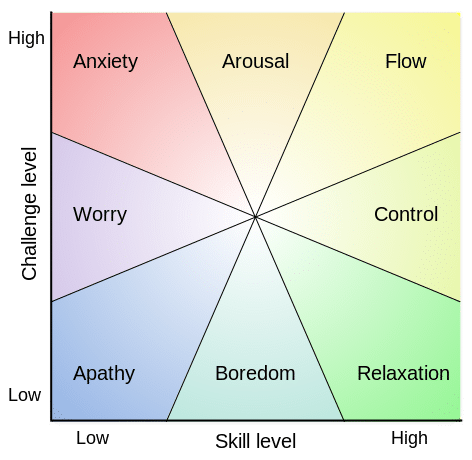Coaching Self Organizing Teams
In the best session I’ve attended at Agile 2008 Joseph Pelrine talked about some of the ideas and science around self organization teams. The talk has an excellent subtitle “Hard science for soft skills”. I’ve already covered some of the presentation and exercises on InfoQ so I won’t repeat that here. Instead I will focus on the additional material we covered.
Conflict
Based on the work of his partner Ben Fuchs. In an attempt to suss out our differing definitions of conflict we were asked:
So when you think of conflict in your environment, what do you think of?
- Do you see it as threatening?
- Is it struggle between right and wrong, good and evil?
- Or is it the struggle for intimacy?
- Is it a natural consequence of differences and opportunity to deepen relationships?
- Is it evidence that our social and power structures are distorted and not in harmony?
- Does it prove that our group is healthy enough to engage with differences
- Perhaps it is a synchronous and meaningful signal that something in the wider system needs attention?
How does the experience of conflict feel to you? Is it painful, frightening, or perhaps a little exciting?
Within our small group there was a surprising range of difference where some thought a little conflict was necessary and good to grow, while others thought all conflict was bad. Joseph used the analogy of a soccer coach and team to illustrate how a little conflict can help push the entire team to a higher level. A soccer team has 24 team members only 11 of whom will play in any given game. The result competition and conflict pushes people to both greater individual and team performance.
When conflict happens its important to recognize that there three levels of conflict:
- Pre conventional – primitive feels of fight or flight that evolved to handle life threatening events.
- Conventional – personal identity and sense of self – likely evoked when “personal values and beliefs, self-esteem or rank” are at issue.
- Post conventional – threats beyond the individual to the group that the person is involved in.
Mihály Csíkszentmihályi’s Flow Model (Revised)

Skills vs. Challenges – we were challenged to think about various tasks and see where the map into the diagram. Do we spend our time in Boredom, Flow, Control, …? For instance if we’re programming in a new language and using to solve a non trivial problem then we will find ourselves either in Anxiety or Arousal. If we’re doing complex tasks that we no longer find challenging then we’re in Boredom or Relaxation. As we think about teams and team members we can consider where do they fit on the circle for specific tasks. If we see people in Anxiety or Arousal then we should consider what can we do to help move them towards Flow and Control – so that the project will be in a safer place. Conversely if they’re Bored or Relaxed then we need to consider how to challenge them to help move their performance around the circle.
Power bases
- Reward power - you give someone reward power if you believe that someone will do something good for you.
- Coercive power - you give someone, if you believe that someone can do you harm
- Legitimate power - explicit (work), implicit (children) contract - mix of reward and coercive
- Expert Power - on the basis of your belief in someone’s expertise.
- Referent power - based on their personal integrity example: Ghandi, Mandella, Dalai Lama, …
Which power bases can you raise?
Expert power - learn, professional development Referent power - be open, honest, deliver on your promises.
Tidbits
If you make the interpretation then you have to accept to the conclusions. If you have people who are having troubling accepting the conclusion then you have to get them to do the interpretation.
You have to listen for weak signals - not all problems that teams have are obvious.
Baseball bat – apparently from Ron J.
- First time person does something - explain the effect of the behaviour on the team
- Second time - explain the effect on themselves.
- Third time - implement it on them aka the baseball bat/rolled up newspaper.
Now turn the model on its head - why should the person change? If the behaviour violates the team norms under some circumstances the team will adapt. Either the team will adapt or the person will. In many cases instead of intervening step back and let the team sort the issue out: maybe the team will regroup around this person to protect.
J’s law of groups - groups larger than seven tend to sub-divide when you add the eighth person. In part this happens because the number of communication channels grow too large for the group to handle.
In addition when the group organisation changes (adding/removing members) all the relationships need to be renegotiated. So if change of team membership must happen its better to get it all out the way at once. For the same reasons groups must reform as per the Tuckman.
Image attribution: Oliverbeatson via Wikimedia Commons

Mark Levison
Mark Levison has been helping Scrum teams and organizations with Agile, Scrum and Kanban style approaches since 2001. From certified scrum master training to custom Agile courses, he has helped well over 8,000 individuals, earning him respect and top rated reviews as one of the pioneers within the industry, as well as a raft of certifications from the ScrumAlliance. Mark has been a speaker at various Agile Conferences for more than 20 years, and is a published Scrum author with eBooks as well as articles on InfoQ.com, ScrumAlliance.org and AgileAlliance.org.
